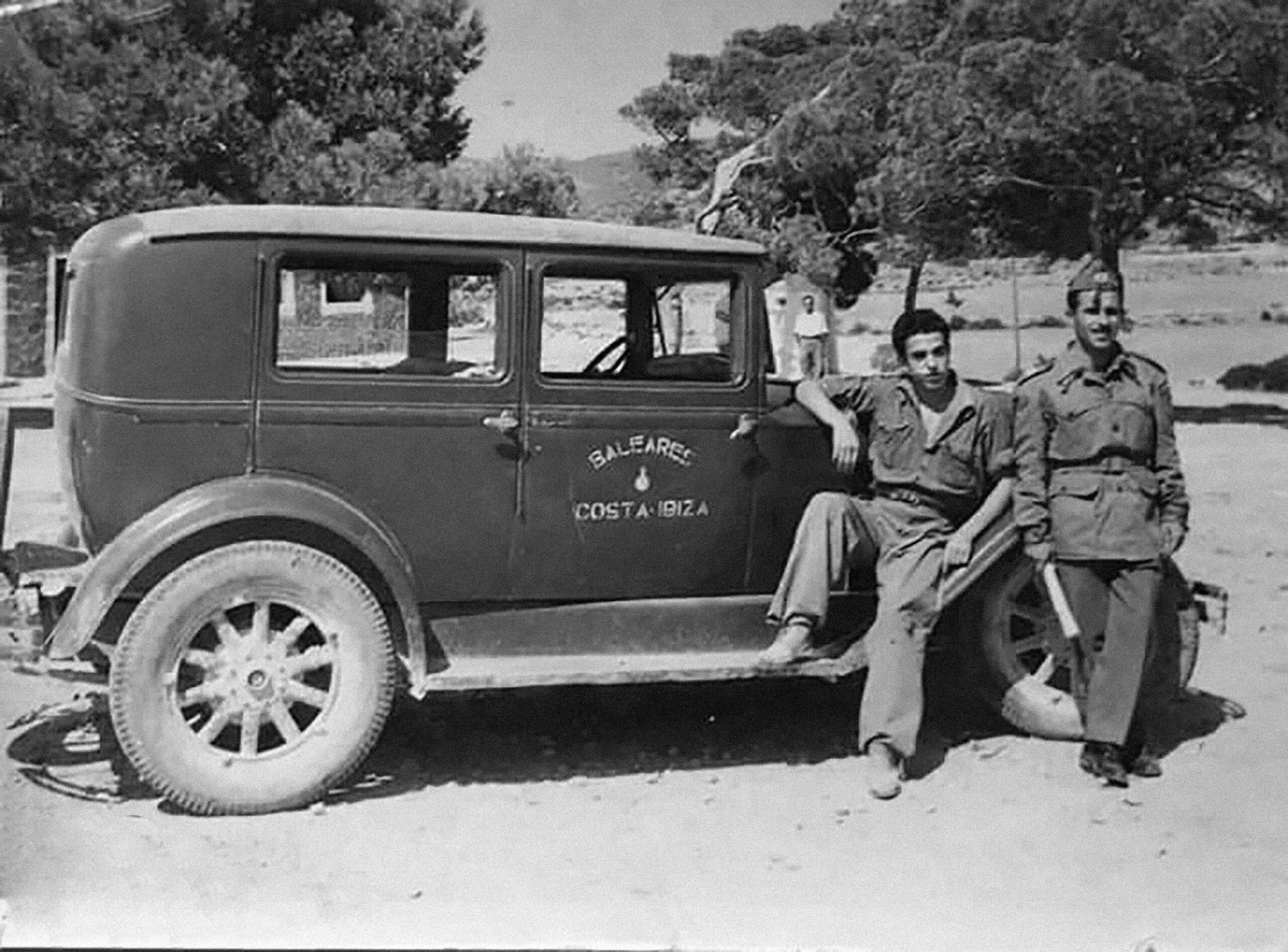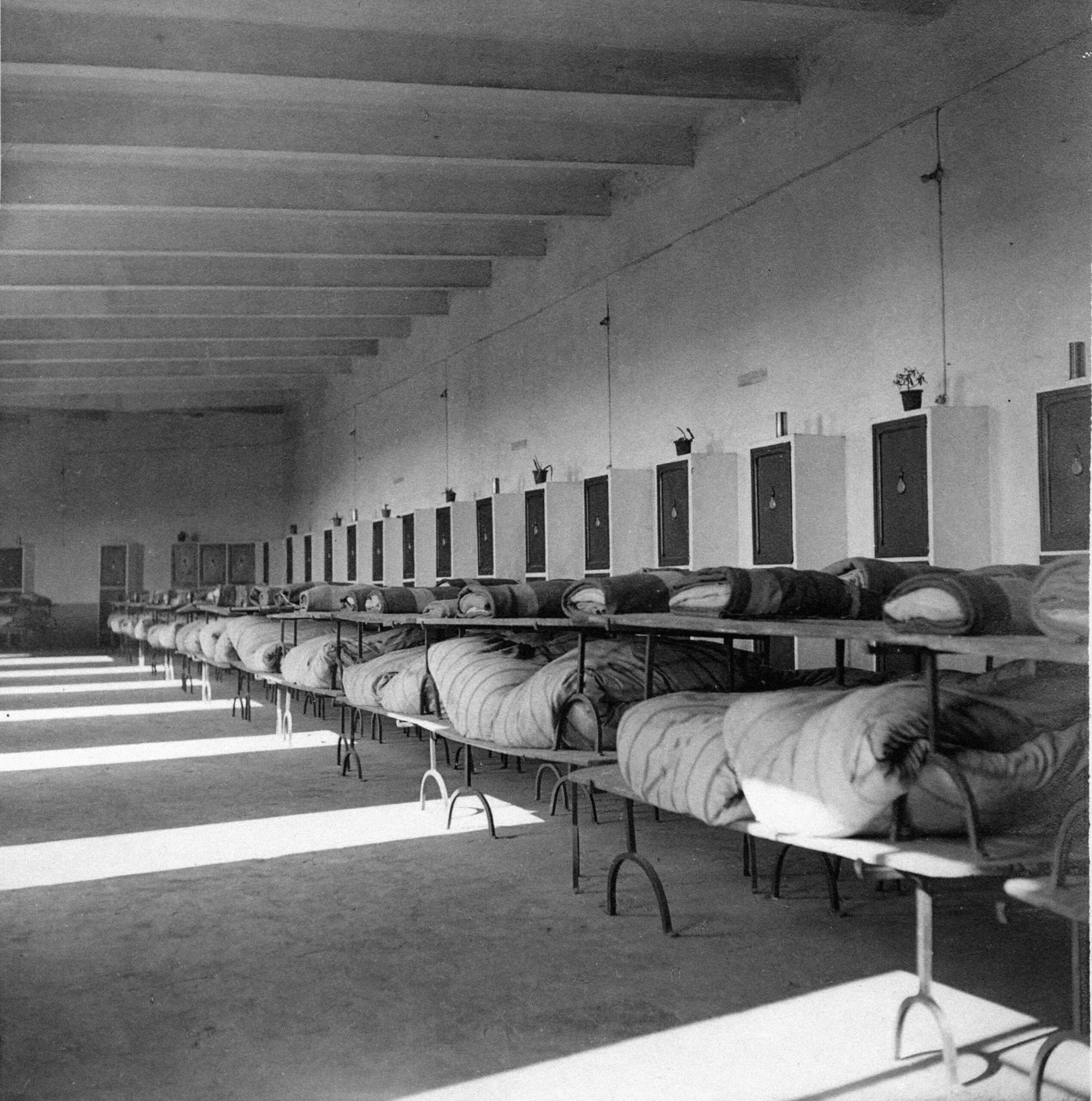MILITARY
BASE
The facilities were built in the summer of 1941, next to the Es Codolar Airport road, as part of a plan that included the commissioning of the airport and the access road to house the detachment and anti-aircraft artillery battery.
Anti-aircraft battery stairs
ARPA Patrimonio
MILITARY
BASE
During the 1940s
The facilities were built in the summer of 1941, next to the Es Codolar Airport road, as part of a plan that included the commissioning of the airport and the access road to house the detachment and anti-aircraft artillery battery.

Anti-aircraft battery stairs. ARPA Patrimonio
CONSTRUCTION
SUMMER 1941
PLAN OF THE WORKS AND CONSTRUCTION OF THE SA CALETA MILITARY BASE
Given the danger and threat posed by the war situation in Europe during World War II, it was decided to fortify the Balearic Islands, as well as other strategically important locations on the Iberian Peninsula, North Africa, and the Canary Islands.
The fortifications of Sa Caleta were part of this defense and fortification plan, named the Kindelán Plan, named after the general and governor of the Balearic Islands at the time.
The facilities were built in the summer of 1941, next to the Es Codolar Airport road, as part of a plan that included the commissioning of the airport and the access road to house the detachment and anti-aircraft artillery battery.
BATTALION
No. 92, 2nd Company
The Workers’ Battalion, dependent on the Balearic Islands Fortifications and Works Command (Prisoners of War No. 92, 2nd Company), participated in its construction. Its commander, Chief Engineer, was Roberto Fritschi. Among the works carried out in 1941 were the aforementioned installations and the construction of both the battery’s fortifications and defense points, as well as adjacent installations such as the barracks, sentry box, trenches, and machine gun nests.
The battery consisted of two British-made Vickers 101.6/45 AA guns, model 1917. These guns were installed at Sa Caleta to protect the air and naval space around the airport. A network of underground tunnels connected the batteries to each other and to the command post, where the necessary telemetry information was calculated and transmitted. The original command post, located parallel to the batteries, was moved to its current location after natural cliff collapses. The remains of the former command post, and its now-blocked access, are still visible.
MILITARY COAST IBIZA
Intermediate Military Archive of the Balearic Islands

Map of the land occupied by Battery No. 52 of Ibiza. Balearic Works Command, Plaza de Palma. Intermediate Military Archive of the Balearic Islands
TRENCHES
AND MACHINE GUN NESTS
REGIMENT NUMBER 23,019
Trenches and machine gun nests were also prepared to defend the batteries from possible ground attacks. The artillery house, built along with the rest of the installations, is located near the Phoenician structures identified as the Port District. The sentry box and barracks, now the building that houses the interpretation center, were built alongside the batteries to serve the personnel who operated them.
As a whole, the Sa Caleta anti-aircraft batteries are an example of the defensive policy and zeal that emerged from the Civil War. The installations remained active and underwent constant repairs and renovations until the 1960s, when they were abandoned.
NO-DO
Military Maneuvers, Anti-Aircraft Batteries
NO-DO
Military Maneuvers, Anti-Aircraft Batteries



